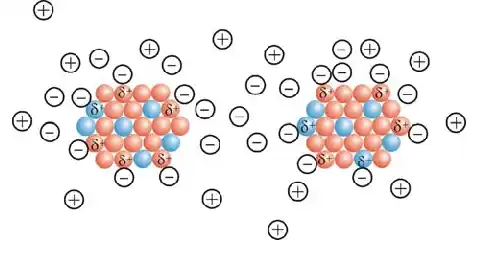افشین رشید
اُستادیار ؛ عضو هیات علمی دانشگاه آزاد اسلامی واحد علوم و تحقیقات تهران
600 یادداشت منتشر شدهelectronic transport and conduction modes of various molecules on the surface of CNTs Nanotubes

Note: In the case of electronic transport and conduction of different molecules on the surface of CNTs nanotubes, in terms of SWCNTs length and their stiffness, they have similar conditions. There are many properties and applications of carbon nanotubes that take full advantage of the CNTs aspect ratio, mechanical strength, electrical and thermal conductivity.
Electronic conductivity can affect some of the intrinsic properties of these nanotubes . Heat treatment of nanotubes reduces the number of structural defects in the nanotubes, defects that are introduced by purification or catalyst particles. After heat treatment, the electronic spectrum of single-walled carbon nanotubes (CNTs) loses its sensitivity to electronic conductivity, while it is sensitive to the electronic evolution of carbon nanotube particles in the transition or conduction state . Therefore, some intrinsic properties for pure nanotubes or those that have been slightly heated are subject to the reaction of electromagnetic particles and an increase in conductivity in the conduction and potential electronic conduction states.

In nanoelectronics, the electric arc method is used to produce carbon nanotubes. In this method, a relatively low voltage source is used to create a spark between two electrodes. A transition metal catalyst is added to the graphite anode to accelerate the production of carbon nanotubes. Usually, to improve the electrical properties of some materials such as (glassy carbon electrodes) GCE , carbon paste electrodes, graphite electrodes or graphene electrodes, nanotubes can be added to their bulk. In general, it has been observed that adding nanoparticles into the structure of the electrodes leads to improved electrochemical properties, higher sensitivity and lower detection limits . In addition, in nanoelectrochemical detection methods , the use of nanostructures generally improves the charge transfer at the electrode surface.
Conclusion :
In the electronic transport and conduction state of different molecules on the surface of CNTs nanotubes, in terms of SWCNTs length and their stiffness, they have similar conditions. There are many properties and applications of carbon nanotubes that take full advantage of the CNTs aspect ratio, mechanical strength, electrical and thermal conductivity.